Posté par Pascale Dubus, le 13 juin 2015;
- Date et lieu du colloque : 5-6 novembre 2015, Bourg-en-Bresse, Monastère royal de Brou
- Date limite : 15 juillet 2015
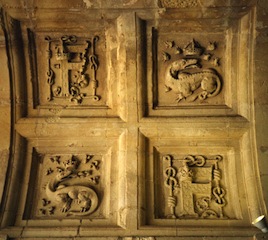 Aux côtés des armoiries, des devises et des mots, l’emblématique de la fin du Moyen Âge et de la Renaissance donne une place essentielle aux lettres de l’alphabet. Si quelques-unes de mentions ou associations de lettres se comprennent aisément, dans la mesure où elles correspondent aux initiales de leur utilisateur, à celles du couple qu’il forme avec son épouse, à la terre qu’il gouverne ou même au mot qu’il emploie, beaucoup de ces « monogrammes » restent totalement hermétiques et résistent à toute interprétation. Y compris parmi les plus connus tel que le EV de Jean de Berry, le EE de Philippe le Bon, la croix triple dans le . . . → En lire plus
Posté par Pascale Dubus, le 10 juin 2015;
- Date de prise de fonction : Novembre 2015
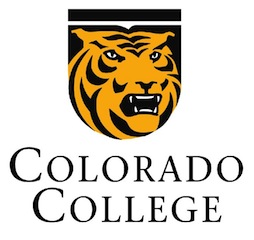 The Art Department at Colorado College is presently seeking a visiting faculty member to teach a course in Italian Renaissance Art from November 16 through December 16, 2015, our “Block 4” (including a fall break from November 21-29). The class may focus on any aspect of the art of Italy between the period of 1300 and 1700. Colorado College is a nationally ranked, selective private liberal arts college located in Colorado Springs, CO. We operate on a unique academic calendar in which the academic year is divided into eight “Blocks” of three-and-one-half weeks each. On the Block Plan, students take and instructors teach only one Block at a time; classes typically meet . . . → En lire plus The Art Department at Colorado College is presently seeking a visiting faculty member to teach a course in Italian Renaissance Art from November 16 through December 16, 2015, our “Block 4” (including a fall break from November 21-29). The class may focus on any aspect of the art of Italy between the period of 1300 and 1700. Colorado College is a nationally ranked, selective private liberal arts college located in Colorado Springs, CO. We operate on a unique academic calendar in which the academic year is divided into eight “Blocks” of three-and-one-half weeks each. On the Block Plan, students take and instructors teach only one Block at a time; classes typically meet . . . → En lire plus
Posté par Sarah Feron, le 4 juin 2015;
- Date et lieu de la table ronde : 9 juin 2015 - 17h - Galerie Colbert, Auditorium
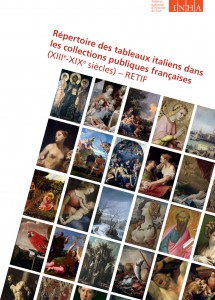 Le Répertoire des tableaux italiens en France, XIIIe-XIXe siècle (RETIF), est désormais consultable en ligne dans son intégralité. Au cours de cette présentation, différents acteurs et partenaires du projet feront part de leur expérience et de leur intérêt pour ce programme de recherche. Le Répertoire des tableaux italiens en France, XIIIe-XIXe siècle (RETIF), est désormais consultable en ligne dans son intégralité. Au cours de cette présentation, différents acteurs et partenaires du projet feront part de leur expérience et de leur intérêt pour ce programme de recherche.
Introduction Michel Laclotte, Les origines du programme Nathalie Volle, Présentation et rayonnement de RETIF
Les Débuts Olivier Bonfait, Le RETIF entre rêve et réalité Mickaël Szanto, Les prémices du RETIF Arnauld Brejon de Lavergnée, Le « Répertoire des peintures italiennes du XVIIe siècle des Musées de France » en 1988, un précurseur
Les Acteurs Le Groupe d’attribution Catherine Goguel, Cosimo Ulivelli à Dôle . . . → En lire plus
Posté par Pascale Dubus, le 4 juin 2015;
- Date limite : 6, 8, 9 juin 2015
- Date et lieu du colloque : 31 mars-2 avril 2016, Boston, Congrès de la RSA
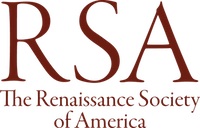 Trois nouvelles sessions pour le congrès annuel de la RSA proposent un appel à communication : Trois nouvelles sessions pour le congrès annuel de la RSA proposent un appel à communication :
1. Converging paths. Encounters between art and science Deadline: June 6, 2015
Art and science encounter each other when they seek exactitude. (E.-J. Marey)
In spite of being very different research fields, with different goals and methodologies, art and science can interact in many ways and influence each other. Progress in scientific research can bring about progresses in art, as testified by the introduction of the perspective in Renaissance art, and technical discoveries, such as the invention of oil painting, can offer artists new expressive tools. Furthermore, science can also provide valuable tools for . . . → En lire plus
Posté par Sébastien Bontemps, le 26 mai 2015;
- Date et lieu du colloque : 8-9 juin 2015, Paris, INHA, Salle Vasari
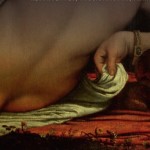 L’invention du geste amoureux a la Renaissance (Paris, 8-9 Jun 15) L’invention du geste amoureux a la Renaissance (Paris, 8-9 Jun 15)
INHA Paris, salle Vasari, 6 Rue des Petits Champs, 75002 Paris, 08. – 09.06.2015
L’invention du geste amoureux dans la peinture de la Renaissance (1500-1650). Résurgences, codifications, transgressions.
Colloque international organisé par Giovanni CARERI (EHESS), Elinor MYARA KELIF (UNIVERSITE PARIS-SORBONNE), Valérie BOUDIER (UNIVERSITE LILLE 3) et Elisa DE HALLEUX (UNIVERSITE PANTHEON SORBONNE) AVEC LA PARTICIPATION DE L’HICSA (Université Panthéon Sorbonne), DU CEHTA (Ecole des Hautes Etudes en Sciences Sociales), DU LABEX CAP (Université Panthéon Sorbonne) ET DU LABEX EHNE (Université Paris-Sorbonne)
LUNDI 8 JUIN Prototypes visuels, stéréotypes amoureux Présidence de séance : Michel Hochmann (EPHE)
9h30: Introduction par Giovanni Careri
10h00: Carmen Decu (Université de Genève) Aux frontières du . . . → En lire plus
Posté par Pascale Dubus, le 26 mai 2015;
- Date limite : 2 octobre 2015
- Date et lieu du colloque : 18-20 juillet 2016, Glasgow, University of Glasgow
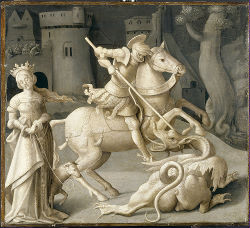 We invite proposals for panels and for individual papers from Renaissance scholars from the disciplines of archaeology, architecture, history of art, history, history of science and medicine, literature, music, philosophy and other fields. Proposals for panels (90 minutes) and individual papers (20 minutes) should engage with one of the following themes: We invite proposals for panels and for individual papers from Renaissance scholars from the disciplines of archaeology, architecture, history of art, history, history of science and medicine, literature, music, philosophy and other fields. Proposals for panels (90 minutes) and individual papers (20 minutes) should engage with one of the following themes:
Anachronisms Conflict and Resolution Imaging the Nation Reformations and Recusants Beasts Word and Image
The conference will also feature an open strand for papers which engage with themes other than those suggested.
Proposals (max 400 words) are welcome from both postgraduates and . . . → En lire plus
Posté par Pascale Dubus, le 25 mai 2015;
- Date et lieux des journées d'étude : 28-29 mai 2015, Tours, CESR
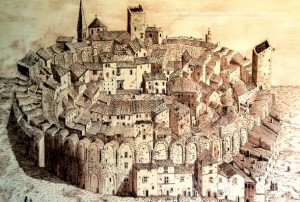 The interpretation and/or reception of local/regional antiquities (of Roman origin or stemming from other antique civilisations or of prehistoric times) Organisation Frédérique Lemerle (CNRS, CESR-Tours, UMR 7323) The interpretation and/or reception of local/regional antiquities (of Roman origin or stemming from other antique civilisations or of prehistoric times) Organisation Frédérique Lemerle (CNRS, CESR-Tours, UMR 7323)
Jeudi 28 mai
Morning session, chair Karl Enenkel
9.30 – Karl Enenkel (Westfälische Wilhelms-Universität Münster) (chair morning session) Introduction
9.45 – Alain Schnapp (Université Paris 1 Pantheon Sorbonne) Megaliths, Thunderstones and Urns
10.30 – Coffee break
10.45 – Bernd Roling (Freie Universität Berlin) Our white ladies on the graves: Megalith culture and fairy belief in early modern antiquarism 11.30 – Nuno Senos (Universidade NOVA de Lisboa) The Roman temple of Évora: visions of Antiquity . . . → En lire plus
Posté par Alexandra ZVEREVA, le 23 mai 2015;
- Date et lieu du colloque : 27-31 octobre 2015, Moscou, Université d'Etat de Moscou Lomonossov, Faculté d'Histoire
- Date limite : 31 mai 2015
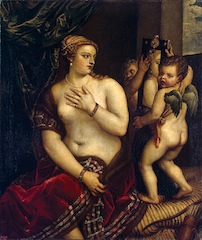 Dear friends and colleagues, Dear friends and colleagues,
The Department of History and Theory of Art at the Faculty of History of Lomonosov Moscow State University and the Institute of History of Saint Petersburg State University invite you to take part in the Sixth international conference :
“Actual Problems of Theory and History of Art”. The conference will take place on October 27-31, 2015, in Moscow, at the Faculty of History of Lomonosov Moscow State University. The 2015 conference will be held in cooperation with Moscow Kremlin Museums.
The conference is dedicated to the actual problems of theory and history of visual arts . . . → En lire plus
Posté par Sarah Feron, le 19 mai 2015;
- Date et lieu de la journée d'études : 11 juin 2015 - 9h30 - Galerie Colbert, Salle Giorgio Vasari
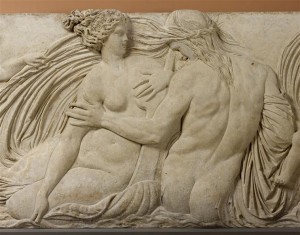 C’est en 1949 que Pierre Du Colombier publiait la dernière monographie consacrée à Jean Goujon : à la lumière des études et restaurations récentes, particulièrement au palais du Louvre et au château d’Ecouen, il est temps de faire le point sur le parcours artistique du sculpteur, de Rouen jusqu’à Bologne. Universitaires et conservateurs se réuniront afin de confronter et d’approfondir les points de vue sur les attributions, le rapport à l’architecture et à son décor, sa réaction face aux créations bellifontaines. Les échanges entre les intervenants et la salle permettront d’affiner la remise en perspective de Goujon par rapport à l’art de . . . → En lire plus C’est en 1949 que Pierre Du Colombier publiait la dernière monographie consacrée à Jean Goujon : à la lumière des études et restaurations récentes, particulièrement au palais du Louvre et au château d’Ecouen, il est temps de faire le point sur le parcours artistique du sculpteur, de Rouen jusqu’à Bologne. Universitaires et conservateurs se réuniront afin de confronter et d’approfondir les points de vue sur les attributions, le rapport à l’architecture et à son décor, sa réaction face aux créations bellifontaines. Les échanges entre les intervenants et la salle permettront d’affiner la remise en perspective de Goujon par rapport à l’art de . . . → En lire plus
Posté par Pascale Dubus, le 15 mai 2015;
- Date limite : 30 juin 2015
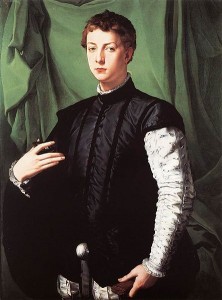 We seek contributions for an edited volume that aims to explore how spaces, images, and objects played a powerful role in codifying and conveying messages of self-fashioning for the multifold social groups of the Medicean State. We seek contributions for an edited volume that aims to explore how spaces, images, and objects played a powerful role in codifying and conveying messages of self-fashioning for the multifold social groups of the Medicean State.
Early modern Tuscany—with the consolidation of Medici power as dukes and subsequently grand dukes, and the formation of new courtly social groups (newcomers, nobles, court officials) that fostered an increasingly ritualized society—offers an important opportunity to explore how different categories of people fashioned their identity and positioned themselves in the societal context through the display in their houses. How did artistic politics reflect, . . . → En lire plus
Posté par Alexandra ZVEREVA, le 14 mai 2015;
- Date et lieu du colloque : 27-31 octobre 2015, Moscou, Université d'Etat de Moscou Lomonossov, Faculté d'Histoire
- Date limite : 15 mai 2015
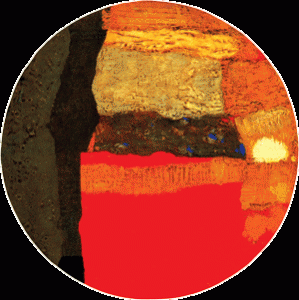 Dear friends and colleagues, Dear friends and colleagues,
The Department of History and Theory of Art at the Faculty of History of Lomonosov Moscow State University and the Institute of History of Saint Petersburg State University invite you to take part in the Sixth international conference “Actual Problems of Theory and History of Art”. The conference will take place on October 27-31, 2015, in Moscow, at the Faculty of History of Lomonosov Moscow State University. The 2015 conference will be held in cooperation with Moscow Kremlin Museums.
The conference is dedicated to the actual problems of theory and history of visual arts and architecture, as well as to the problems of interaction between Russian and other . . . → En lire plus
Posté par Fabien Dufoulon, le 13 mai 2015;
- Date et lieu du colloque : 10-11 juin 2015, Lens et Rouen, Musée du Louvre-Lens & Musée des Beaux-Arts de Rouen.
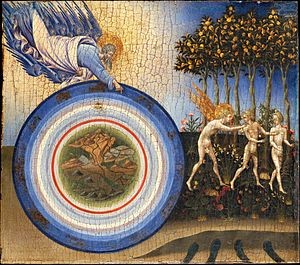 C’est un parcours au milieu des objets, et c’est aussi un parcours dans la peinture, auxquels le Musée du Louvre-Lens et le Musée des Beaux-Arts de Rouen nous convient à travers les œuvres exposées et venues de toute la Toscane, terre d’échanges et de circulation, foyer de création artistique à nul autre pareil. C’est un parcours au milieu des objets, et c’est aussi un parcours dans la peinture, auxquels le Musée du Louvre-Lens et le Musée des Beaux-Arts de Rouen nous convient à travers les œuvres exposées et venues de toute la Toscane, terre d’échanges et de circulation, foyer de création artistique à nul autre pareil.
L’idée pour ce colloque s’est vite imposée de, tout d’abord, mieux éclairer les créations et leurs créateurs, remis en situation et présentés dans leur chair sensible, en pouvant bénéficier là des acquis les plus récents des études menées au sein des laboratoires de restauration et . . . → En lire plus
Posté par Pascale Dubus, le 12 mai 2015;
- Date et lieu du colloque : 31 mars-2 avril 2016, Boston, RSA
- Date limite : 15 mai - 5 juin 2015
 Le congrès annuel 2016 de la Renaissance Society of America (RSA) se tiendra à Boston, du 31 mars au 2 avril 2016. Neuf nouvelles sessions appellent à communication : Le congrès annuel 2016 de la Renaissance Society of America (RSA) se tiendra à Boston, du 31 mars au 2 avril 2016. Neuf nouvelles sessions appellent à communication :
1. Crafting a Brussels Artistic Network in Early Modern Europe (ca. 1400-1750) 2. Monstrous Things 3. Makers: Women Artists in the Early Modern Courts of Europe 4. Artists and Friendship in the Renaissance 5. Artists and their Friends: New Questions and Ideas 6. The Spatial Politics of Architectural Barriers in Renaissance Europe 7. Art and the Emotions of Renaissance Women 8. Constructing Connections: Place and Identity in Early Modern Visual Culture 9. Rethinking the Rhetoric of Images
Informations . . . → En lire plus
Posté par Marion Boudon-Machuel, le 11 mai 2015;
- Date et lieu de la journée d'études : 15 juin 2015, Tours, CESR
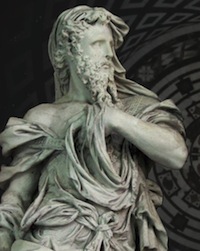 Depuis 2013, un groupe de spécialistes de l’image et de l’architecture s’est constitué autour d’un projet de recherche collectif sur le château d’Anet, ce « monument de l’art français », projet généreusement accueilli et facilité par le propriétaire des lieux, Jean de Yturbe. L’ambition était en effet d’associer différents savoirs pour relire cet édifice qui, dans une inédite alliance des arts, symbolise tout particulièrement les ambitions de la Renaissance et leur épanouissement sous l’égide d’Henri II. Des découvertes et nouvelles analyses se sont dégagées dans tous les domaines concernés (architecture, jardin, sculpture, vitrail, livres, mobilier, objets d’art, iconographie…) dont certaines sont présentées au cours de cette journée afin d’être confrontées et . . . → En lire plus Depuis 2013, un groupe de spécialistes de l’image et de l’architecture s’est constitué autour d’un projet de recherche collectif sur le château d’Anet, ce « monument de l’art français », projet généreusement accueilli et facilité par le propriétaire des lieux, Jean de Yturbe. L’ambition était en effet d’associer différents savoirs pour relire cet édifice qui, dans une inédite alliance des arts, symbolise tout particulièrement les ambitions de la Renaissance et leur épanouissement sous l’égide d’Henri II. Des découvertes et nouvelles analyses se sont dégagées dans tous les domaines concernés (architecture, jardin, sculpture, vitrail, livres, mobilier, objets d’art, iconographie…) dont certaines sont présentées au cours de cette journée afin d’être confrontées et . . . → En lire plus
Posté par Denis Dubois, le 9 mai 2015;
- Date limite : 12 juillet 2015
- Date et lieu des journées d'études : 9-10 novembre 2015, Paris, Institut national d'histoire de l'art (INHA)
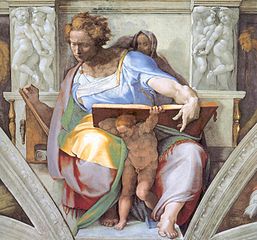 La voûte de la chapelle Sixtine, peinte par Michel-Ange entre 1508 et 1512, a la particularité d’avoir été depuis sa création une œuvre paradigmatique. Giorgio Vasari écrivait dans les Vies qu’elle est « la lumière de notre art », elle qui a permis d’éclairer « le monde plongé depuis des siècles dans les ténèbres ». Récemment, l’historienne de l’art Cristina Acidini Luchinat rappelait que « la Voûte de la Sixtine est l’un des chefs-d’œuvre, peu nombreux, dont on peut dire qu’ils ont changé le cours de l’art occidental ». Que . . . → En lire plus
Posté par Pascale Dubus, le 8 mai 2015;
- Date et lieu du colloque : 31 mars−2 avril 2016, Boston, Congrès de la RSA
- Date limite : 29 mai 2015
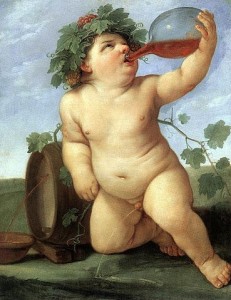 We’re pleased to announce an intoxicant-themed CFP for the Renaissance Society of America ‘s next Annual Conference, which will take place in Boston, Massachusetts, on 31 March−2 April 2016 . Full details below; don’t hesitate to get in touch if you have any questions or require further information. We’re pleased to announce an intoxicant-themed CFP for the Renaissance Society of America ‘s next Annual Conference, which will take place in Boston, Massachusetts, on 31 March−2 April 2016 . Full details below; don’t hesitate to get in touch if you have any questions or require further information.
Intoxicants and Early Modernity
This set of sessions welcomes papers or panels of papers relating to the topic of early modern intoxicants and intoxication. Our focus is on substances and commodities that induced mental and physiological changes and which were associated by contemporaries with ‘poisoning’, ‘fuddling’, and ‘drunkenness’. These . . . → En lire plus
Posté par Pascale Dubus, le 8 mai 2015;
- Date limite : 4 janvier 2016
- Date du colloque : 17-20 mars 2016, Nicosie, Centre for Visual Arts and Research (CVAR)
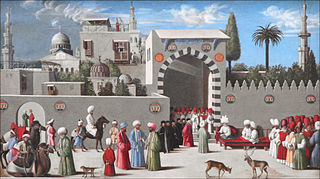 Othello’s Island is an annual conference, now in its fourth year, examining the history, culture, art and literature of the medieval and renaissance periods from a multidisciplinary perspective. Located at the Centre for Visual Arts and Research (CVAR) in Nicosia, the capital of Cyprus, the conference attracts academics and researchers from all over the world in a co-operative and constructive environment that has rapidly developed the reputation as one of the friendliest academic conferences in town. It is also seen as encouraging a genuine interdisciplinary approach as there is no streaming of different subjects and at recent events this . . . → En lire plus Othello’s Island is an annual conference, now in its fourth year, examining the history, culture, art and literature of the medieval and renaissance periods from a multidisciplinary perspective. Located at the Centre for Visual Arts and Research (CVAR) in Nicosia, the capital of Cyprus, the conference attracts academics and researchers from all over the world in a co-operative and constructive environment that has rapidly developed the reputation as one of the friendliest academic conferences in town. It is also seen as encouraging a genuine interdisciplinary approach as there is no streaming of different subjects and at recent events this . . . → En lire plus
Posté par Olivier Bonfait, le 6 mai 2015;
- Date limite : 15 mai 2015, 15 mai 2015, 15 mai 2015, 15 mai 2015
- snap_isAutoPosted : 1
- snap_MYURL :
- snapEdIT : 1
- snapFB : s:350:"a:1:{i:0;a:12:{s:4:"doFB";s:1:"1";s:8:"postType";s:1:"T";s:10:"AttachPost";s:1:"2";s:10:"SNAPformat";s:9:"(%TITLE%)";s:9:"isAutoImg";s:1:"A";s:8:"imgToUse";s:0:"";s:9:"isAutoURL";s:1:"A";s:8:"urlToUse";s:0:"";s:11:"isPrePosted";s:1:"1";s:8:"isPosted";s:1:"1";s:4:"pgID";s:31:"191446130897534_894420677266739";s:5:"pDate";s:19:"2015-05-06 20:17:25";}}";
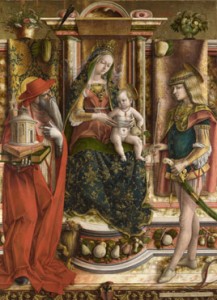 AHRC Doctoral Award on Carlo Crivelli, Oxford Brookes University / National Gallery London Oxford Brookes University, Faculty of Humanities and Social Sciences Department of History, Philosophy and Religion 3 Year full-time Studentship Start date: 1 October 2015 Eligibility: Home/EU Fees: Annual Home/EU fees paid Stipend: £14,067 Deadline: The closing date for applications is 17:00 on Friday 15 May 2015. Interview date: Interviews will be held in the week commencing: 1 June 2015. Oxford Brookes University, in partnership with the National Gallery, invites applications from suitably qualified UK/EU candidates for a full-time 3-year Collaborative Doctoral Partnership award, funded by the AHRC Collaborative Doctoral Partnership Scheme, to conduct research on the theme: . . . → En lire plus AHRC Doctoral Award on Carlo Crivelli, Oxford Brookes University / National Gallery London Oxford Brookes University, Faculty of Humanities and Social Sciences Department of History, Philosophy and Religion 3 Year full-time Studentship Start date: 1 October 2015 Eligibility: Home/EU Fees: Annual Home/EU fees paid Stipend: £14,067 Deadline: The closing date for applications is 17:00 on Friday 15 May 2015. Interview date: Interviews will be held in the week commencing: 1 June 2015. Oxford Brookes University, in partnership with the National Gallery, invites applications from suitably qualified UK/EU candidates for a full-time 3-year Collaborative Doctoral Partnership award, funded by the AHRC Collaborative Doctoral Partnership Scheme, to conduct research on the theme: . . . → En lire plus
Posté par Pascale Dubus, le 4 mai 2015;
- Date limite : 25 mai 2015
- Date et lieu du colloque : 31 mars-2 avril 2016, Boston, RSA
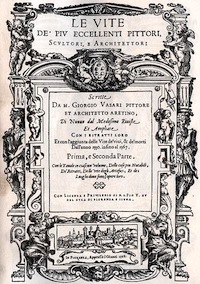 In contradistinction to the biographical portion of the Lives, Giorgio Vasari’s “Introduction to the Three Arts of Design” has received relatively scant attention. This double session revisits the Introduction’s thirty chapters devoted to the materials and creative processes involved in the production and reception of a wide range of media, from stained glass to mosaics, gold ground to intarsia, painting on canvas to damask work. The aim of this session is to incorporate the Introduction into the larger corpus of scholarship on Vasari, early modern art theory, materiality, and pictorial composition. In contradistinction to the biographical portion of the Lives, Giorgio Vasari’s “Introduction to the Three Arts of Design” has received relatively scant attention. This double session revisits the Introduction’s thirty chapters devoted to the materials and creative processes involved in the production and reception of a wide range of media, from stained glass to mosaics, gold ground to intarsia, painting on canvas to damask work. The aim of this session is to incorporate the Introduction into the larger corpus of scholarship on Vasari, early modern art theory, materiality, and pictorial composition.
Papers discussing the Introduction’s characterization of the so-called minor arts are particularly welcome. Please submit . . . → En lire plus
Posté par Denis Dubois, le 29 avril 2015;
- Date limite : 11 mai 2015
- Date de prise de fonction : 1er septembre 2015
- Durée du contrat et lieu : 12 mois, France, Tours
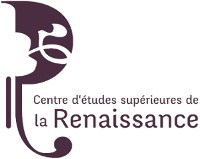 Online prosopographical databases for Renaissance Studies Online prosopographical databases for Renaissance Studies
The university of Tours (France) invites applications for a 12-months postdoctoral research associate housed in the Centre d’Études Supérieures de la Renaissance (CESR) in Tours. Starting on 1 September 2015, the successful candidate will be in charge of developing a website and databases for the “Online prosopographical data in Renaissance Studies” Project, aimed at completing, interconnecting and online publishing the CESR datasets on early modern intellectual, cultural and artistic networks.
Dissertation must have been completed outside France less than 7 years ago. Monthly salary : 1 920.76 €.
Application and CV to be sent by 11 May 2015 to david.fiala@univ-tours.fr and chiara.lastraioli@univ-tours.fr
. . . → En lire plus
|
Équipe Rédacteur en chef : Olivier Bonfait.
Rédacteurs : Elliot Adam (Moyen Age) ; Nicolas Ballet (XX-XXIe siècles) ; Matthieu Fantoni (musées) ; Antonella Fenech Kroke (bourses) ; Vladimir Nestorov (Lettre mensuelle)
Administrateur web : Matthieu Lett.
ancien éditeur : Pascale Dubus
anciens rédacteurs : Gautier Anceau, Sébastien Bontemps, Damien Bril ; Sébastien Chauffour ; Ludovic Jouvet ; Aude Prigot
|
 Aux côtés des armoiries, des devises et des mots, l’emblématique de la fin du Moyen Âge et de la Renaissance donne une place essentielle aux lettres de l’alphabet. Si quelques-unes de mentions ou associations de lettres se comprennent aisément, dans la mesure où elles correspondent aux initiales de leur utilisateur, à celles du couple qu’il forme avec son épouse, à la terre qu’il gouverne ou même au mot qu’il emploie, beaucoup de ces « monogrammes » restent totalement hermétiques et résistent à toute interprétation. Y compris parmi les plus connus tel que le EV de Jean de Berry, le EE de Philippe le Bon, la croix triple dans le . . . → En lire plus
Aux côtés des armoiries, des devises et des mots, l’emblématique de la fin du Moyen Âge et de la Renaissance donne une place essentielle aux lettres de l’alphabet. Si quelques-unes de mentions ou associations de lettres se comprennent aisément, dans la mesure où elles correspondent aux initiales de leur utilisateur, à celles du couple qu’il forme avec son épouse, à la terre qu’il gouverne ou même au mot qu’il emploie, beaucoup de ces « monogrammes » restent totalement hermétiques et résistent à toute interprétation. Y compris parmi les plus connus tel que le EV de Jean de Berry, le EE de Philippe le Bon, la croix triple dans le . . . → En lire plus
 Aux côtés des armoiries, des devises et des mots, l’emblématique de la fin du Moyen Âge et de la Renaissance donne une place essentielle aux lettres de l’alphabet. Si quelques-unes de mentions ou associations de lettres se comprennent aisément, dans la mesure où elles correspondent aux initiales de leur utilisateur, à celles du couple qu’il forme avec son épouse, à la terre qu’il gouverne ou même au mot qu’il emploie, beaucoup de ces « monogrammes » restent totalement hermétiques et résistent à toute interprétation. Y compris parmi les plus connus tel que le EV de Jean de Berry, le EE de Philippe le Bon, la croix triple dans le . . . → En lire plus
Aux côtés des armoiries, des devises et des mots, l’emblématique de la fin du Moyen Âge et de la Renaissance donne une place essentielle aux lettres de l’alphabet. Si quelques-unes de mentions ou associations de lettres se comprennent aisément, dans la mesure où elles correspondent aux initiales de leur utilisateur, à celles du couple qu’il forme avec son épouse, à la terre qu’il gouverne ou même au mot qu’il emploie, beaucoup de ces « monogrammes » restent totalement hermétiques et résistent à toute interprétation. Y compris parmi les plus connus tel que le EV de Jean de Berry, le EE de Philippe le Bon, la croix triple dans le . . . → En lire plus


















